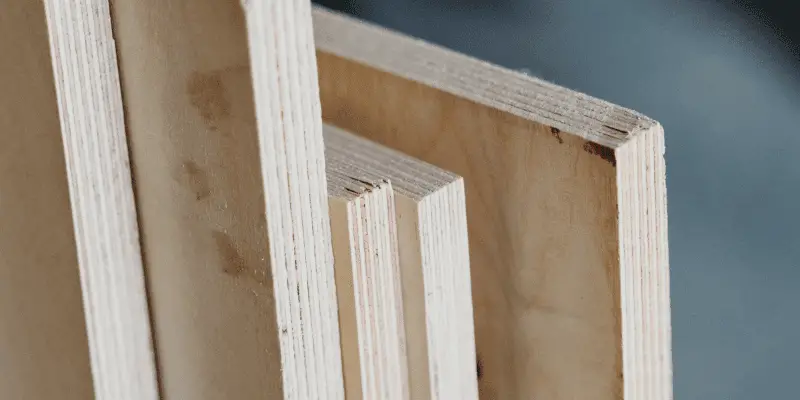Sande plywood is a more affordable option, while birch plywood offers higher quality and strength due to its smooth and sturdy surface, making it suitable for fine woodworking and furniture making. When deciding between Sande and birch plywood, it’s important to consider your project’s specific needs and budget.
Sande plywood is a cost-effective option for general construction and DIY projects but may have more imperfections and rougher surfaces compared to birch plywood. On the other hand, birch plywood provides a more refined finish and greater durability, making it ideal for high-end carpentry and woodworking projects.
Understanding the differences between these two types of plywood can help you make an informed decision based on your unique requirements.
Understanding Sande Plywood And Birch
What Is Sande Plywood?
Sande plywood is a type of hardwood plywood that is derived from the tropical Sande tree, primarily found in Africa. It is known for its versatility and strength, making it a popular choice for various applications in construction and woodworking.
Properties Of Sande Plywood
Sande plywood is characterized by its uniform texture and smooth surface, making it ideal for staining or painting. It is also cost-effective and readily available, making it a preferred choice for budget-conscious projects. In addition, Sande plywood offers excellent dimensional stability and resistance to warping, making it suitable for outdoor use.
What Is Birch Plywood?
Birch plywood is a high-quality plywood made from thin sheets of birch wood that are bonded together with strong adhesive. Birch plywood is known for its strength, durability, and attractive appearance, making it a popular choice for furniture and cabinet making, as well as various other woodworking projects.
Properties Of Birch Plywood
Birch plywood is prized for its smooth and fine-grained surface, which provides an excellent base for veneers and laminates. It also offers superior strength and stability, making it suitable for demanding structural applications. Additionally, birch plywood is resistant to shrinkage, warping, and twisting, making it a reliable choice for both indoor and outdoor use.

Comparing Sande Plywood And Birch For Different Projects
When considering which type of plywood to use for various projects, it’s essential to compare the attributes of different wood options. Two popular choices for plywood are Sande and Birch; each has its unique characteristics that make them suitable for specific applications. Understanding the differences between Sande plywood and Birch plywood will help you make an informed decision based on the requirements of your project.
Strength And Durability
Both Sande plywood and Birch plywood are known for their strength and durability, making them suitable for a variety of projects. However, it is important to note that Birch plywood is generally considered to be stronger and more durable than Sande plywood. Birch plywood is made from a dense hardwood, which gives it a higher degree of strength and resistance to wear and tear. On the other hand, Sande plywood, although durable, may not be as robust as Birch, particularly in high-stress applications such as structural components.
Aesthetics And Finishing
When it comes to aesthetics, Birch plywood is favored for its smooth, pale surface and attractive grain patterns. It is often used in projects where the natural beauty of the wood is a priority, such as furniture making or interior decor. Sande plywood, while also having an appealing grain pattern, tends to have a slightly darker and more variable coloration. Additionally, Birch plywood takes finishes, stains, and paints exceptionally well, making it a versatile choice for achieving specific aesthetic outcomes.
Cost-effectiveness And Availability
Cost-effectiveness is an area where Sande plywood has an advantage over Birch plywood. Sande plywood is often more affordable and readily available, making it a popular choice for budget-conscious projects or those requiring larger quantities of plywood. However, Birch plywood, while typically pricier, is widely available and offers good value for money due to its durability and aesthetic appeal.
Suitable Applications
Both Sande and Birch plywood have specific applications where they excel. Birch plywood is commonly used in high-end furniture making, cabinetry, and interior design projects where appearance and durability are essential. Its strength and resistance to warping make it suitable for structural applications. Sande plywood, on the other hand, is frequently used for general construction, sheathing, and other applications where strength and appearance are less critical, making it a practical choice for a range of building projects.
Factors To Consider When Choosing Between Sande Plywood And Birch
When deciding between Sande plywood and birch for your project, it’s essential to consider several factors that can impact the outcome and overall cost. Evaluating project requirements, environmental considerations, budget constraints, and end-user preferences will help you make an informed decision that aligns with your needs. Let’s delve into each of these factors to help you choose between Sande plywood and birch:
Project Requirements
Project specifications play a crucial role in determining whether Sande plywood or birch is the best fit. Consider factors such as the intended application, load-bearing capacity, and desired finish. While both Sande plywood and birch offer durability, birch is often favored for furniture-making due to its smooth finish and attractive surface. On the other hand, Sande plywood, with its affordable price and durability, may be more suitable for construction and utility projects.
Environmental Considerations
Environmental impact is an important consideration when choosing between Sande plywood and birch. Birch, being a hardwood, is generally more sustainable as it regenerates more slowly. If environmental sustainability is a priority for your project, opting for birch may align with your values. However, if availability and responsible sourcing are the main concerns, Sande plywood, sourced from well-managed forests, may be a viable choice.
Budget Constraints
Budget constraints significantly influence material choices. Birch plywood is known for its higher price due to its premium quality and aesthetic appeal. If your project allows for a higher budget and demands a luxurious finish, birch may be the ideal choice. Conversely, if you need a cost-effective option without compromising on durability, Sande plywood offers a more budget-friendly alternative with its reliable performance and competitive prices.
End-user Preferences
Understanding the preferences and expectations of the end users is critical in the decision-making process. If your project involves furniture or interior decor, the end users may prioritize the appearance and tactile feel of the finished product. In such cases, birch plywood’s smooth surface and appealing aesthetics may be more well-received. Conversely, for applications where end users value sturdiness and cost-efficiency, Sande plywood’s robustness and affordability may be preferable.
Practical Tips For Selecting The Ideal Plywood For Your Project
Consulting With Experts
When it comes to choosing between Sande plywood and Birch plywood, seeking guidance from industry experts can be invaluable. Consulting with experienced professionals not only helps in understanding the specific characteristics and applications of each type of plywood but also aids in making an informed decision that aligns with the requirements of your project.
Samples And Testing
Before making a decision, it’s essential to test the plywood by obtaining samples. This allows you to assess the quality and suitability of each type for your project. Conducting thorough testing on these samples also helps in gauging their performance in different scenarios.
Ensuring Compliance
When selecting plywood, it’s crucial to ensure that the chosen material meets the necessary standards and compliance regulations. This might involve checking for certifications and documentation that guarantee the plywood’s safety and reliability for the intended application.
Long-term Considerations
Additionally, it’s vital to consider the long-term implications. This involves evaluating the plywood’s durability, resistance to wear and tear, and how well it will withstand the test of time in your specific project environment.
Frequently Asked Questions For Sande Plywood Vs Birch
What Are The Main Differences Between Sande Plywood And Birch Plywood?
Sande plywood is a more affordable option known for its durability, while Birch plywood offers a smoother surface and better quality finish. Consider the project requirements and budget to decide which option suits your needs best.
Which Projects Are Best Suited For Sande Plywood?
Sande plywood is ideal for outdoor projects, such as building fences, sheds, and decks. Its resistance to moisture and decay makes it a reliable choice for construction in challenging environmental conditions.
Why Is Birch Plywood Preferred For Furniture-making?
Birch plywood’s smooth surface and high-quality finish make it a popular choice for crafting fine furniture. Its superior strength and durability also contribute to its attractiveness for furniture-making projects.
Conclusion
Sande plywood and birch plywood each have their own strengths and weaknesses. Both offer durability and versatility, but the choice ultimately depends on specific project needs and budget constraints. Whether it’s for furniture, crafting, or construction, understanding the differences between the two can help you make an informed decision.



One thought on “Sande Plywood Vs Birch: Choosing the Best for Your Project”